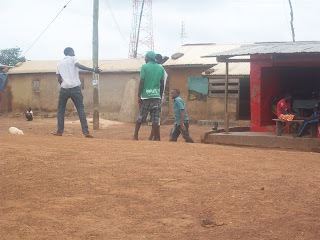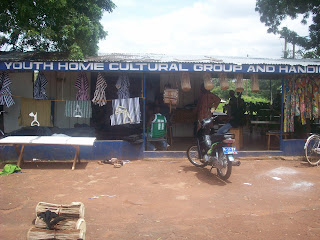By Oliver Griffin
This week, we at CENTRAL PRESS NEWSPAPER interviewed the man who has worked longest at the Cape Coast Polytechnic. Ezekiel Andoh has been cleaning at the polytechnic for over two decades and has seen many changes take place. Now, as he is head of the cleaning staff, he is starting to see the children of previous students come to study themselves. We spoke to him to find out just how the Polytechnic has developed.
It is a hot day in Cape Coast, and I am walking through the campus of the local Polytechnic to meet the head of the cleaning and maintenance staff, Ezekiel Andoh. I’m not sure what to expect in this meeting. The words ‘longest employee’ conjures images of an elderly man for whom time in employment is swiftly coming to an end. Mr Andoh, however, could not be further from this image. A strong, smiling man approaches me and introduces himself and invites me to take a seat.
‘I started working at the Polytechnic in 1984,’ he started. ‘I was just a cleaner and maintenance man then, but that was twenty seven years ago! There have been many changes since then.’ Mr Andoh does not have the appearance or demeanour of a man who has spent the past 27 years taking part in manual labour. Having seen the comings and goings of three principles, it is his experience, expertise and knowledge of the polytechnic are the only things that give anything away. ‘When I started working here,’ he continued, ‘we only had these three buildings (pointing to my left and behind me), and one of those is the toilet! All of those buildings by the entrance have been developed since then.’ It certainly is an impressive level of expansion – in a relatively small amount of time, the polytechnic, which specialises in accountancy and mechanics, has expanded drastically. ‘The student population started at about 1,500 people,’ said Mr Andoh. ‘Now, though, it has increased to about 3,500 students, with about 500 people living in accommodation on Campus.’ When asked about cleaning up after students, Mr Andoh just smiles and shakes his head. ‘The students are good and well behaved,’ he laughed. ‘We work together with the students. When they want something, we assist them. When we need something from them, they assist us. Together we work as a team.’
Team work or not, this campus is still huge. Talk turns to maintaining it to such a high standard, but Mr Andoh reveals that some of the labour they get is for free, courtesy of the local convicts. ‘We use people in the prisons to clean and maintain the site. Other than that though, I employ twenty two permanent staff as part of the maintenance team.’ The fact that convicts are being used to support a regular janitorial team is a very good thing indeed. The prisoners will surely develop some sort of social conscience, which will help them to become useful members of society upon their future release.
Soon, it is time for Mr Andoh to get back to his duties and for me to leave. He tells me that he is now starting to see the children of former students come through the polytechnic and that his career has come full circle, although he hopes to continue working for some time yet! We at CENTRAL PRESS wish him and the polytechnic the best of luck for the future.












